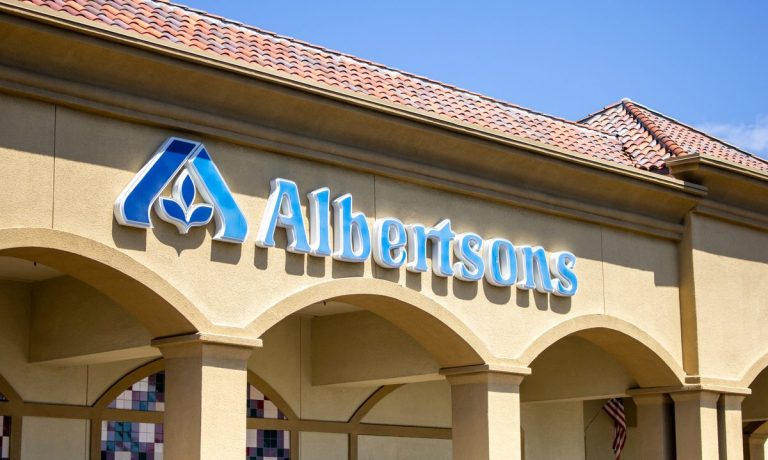Albertsons Sees 33% Digital Growth Amid Strong Loyalty Program Engagement

Albertsons Companies’ digital bets are paying off, driving sales and boosting loyalty membership.
The grocery giant, acquired in October by competitor Kroger, reported its third-quarter earnings Tuesday (Jan. 10), noting that digital sales rose 33% year over year in the period and loyalty membership grew 16% to 33 million.
“Our team continues to deliver strong performance…,” Albertsons CEO Vivek Sankaran said in a statement. “Our investments in digital transformation, differentiation in own brands and Fresh offerings, and the modernization of our operational capabilities contributed to these results.”
Indeed, eGrocery adoption is on the rise, with more than half of all consumers now taking advantage of the option, according to research from PYMNTS’ study “12 Months of the ConnectedEconomy™: 33,000 Consumers on Digital’s Role in Their Everyday Lives,” which drew from responses from tens of thousands of U.S. consumers. The study noted that, as of November, 51% of the country’s adult population is purchasing groceries online for delivery or curbside pickup every month.
Loyalty programs can be key to driving repeated purchases in the face of stiff online grocery competition, enabling grocers to target their shoppers’ specific behaviors and offer deals and rewards that would resonate with them. Albertsons, for its part, has not conducted an earnings call since the news of the Kroger deal went public, but on its last such call, back in July, company executives discussed the loyalty program’s ability to keep consumers coming back.
“Everything we’re doing is driving stickiness,” Sankaran said at the time. “When we get a customer, we want to engage them, keep them, get them to spend more with us, and what’s helping us do that is the digital engagement that they have in the eCommerce business that continues to grow. Once we get them, we’re able to personalize and keep them.”
Indeed, findings from PYMNTS’ Decoding Customer Affinity study, created in collaboration with Toshiba Global Commerce Solutions, revealed that 42% of grocery shoppers said availability of loyalty programs with rewards they like would improve their loyalty to merchants. However, only 5% of consumers stated that loyalty programs are the single most influential factor when selecting a grocer from which to purchase.
In initially announcing the merger, Kroger highlighted its new access to Albertsons’ loyalty and data-informed personalization capabilities as a key advantage of the deal.
Sankaran’s mention in Tuesday’s earnings release of the brand’s private-label strength plays into another key factor informing shopper behavior today — the demand for cost savings amid ongoing economic challenges.
Research from this month’s edition of PYMNTS’ Consumer Inflation Sentiment study, “Consumer Inflation Sentiment: Perception Is Reality,” found that 35% of the more than 2,100 U.S. adults surveyed have switched to purchasing cheaper, lower quality groceries.
Back in October, Kroger highlighted the two grocers’ “combined portfolio of approximately 34,000 total private-label products” as another strength that puts the grocery giant in a position to meet consumers’ demand for lower-cost items while differentiating its brand.
“The combined company’s innovation capabilities, increased manufacturing footprint and expanded national reach will drive improved quality and efficiency, allowing its Our Brands portfolio to accelerate growth and profitability while remaining affordable and accessible to customers,” Kroger stated in October.